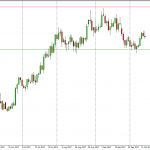
This past week, most key US equities indexes hit new highs again, with the Dow industrials leading +.52 %. This upcoming week marks the 30-year anniversary of the great market meltdown or the crash of 1987.
October, although generally a good month for stock market returns, also hosts the biggest market selloffs including the great crash of 1929. Borrowing a quote form Henry Wadsworth Longfellow “and when she is good she is very, very good; but when she is bad she is horrid.”
Students of market history are asking themselves, is this setting up to be a repeat? One might start by asking about similarities, assuming you believe history tends to repeat. So here is my walk down memory lane as I run down a brief checklist of data points.
I remember October 19,1987 vividly as it was one of the best trading days I ever had. I had come in long volatility on many futures contracts which was mispriced across the board relative to underlying price action. Some of that reasoning was based on Ray Dalio and Bridgewater’s (we had some common office space back then) daily reports that were negative for months regarding the US equities.
His thoughts back in 1987 (dead on and way ahead of the curve), were based on the accelerating rise in interest rates to 10%. Currently on that score, although we do have a Fed that has slightly raised rates, they are still virtually zero, so no rush to sell equities to lock in a great safe return. We can take high rates off the list as a factor for a market selloff.
Also, in those days, there were things called selloffs and they were common. This was well before the PPT (the Plunge Protection Team) was formed. Central banks and sovereign wealth funds did not buy stocks.as standard policy.
Back in the day, a weak close on Friday, especially when the markets were already trading beneath key moving averages meant follow-thru. The question was how much, how fast and how long it would last. Monday morning follow-thru. In 1987, Friday’s close (October 16) was terrible.














Leave A Comment